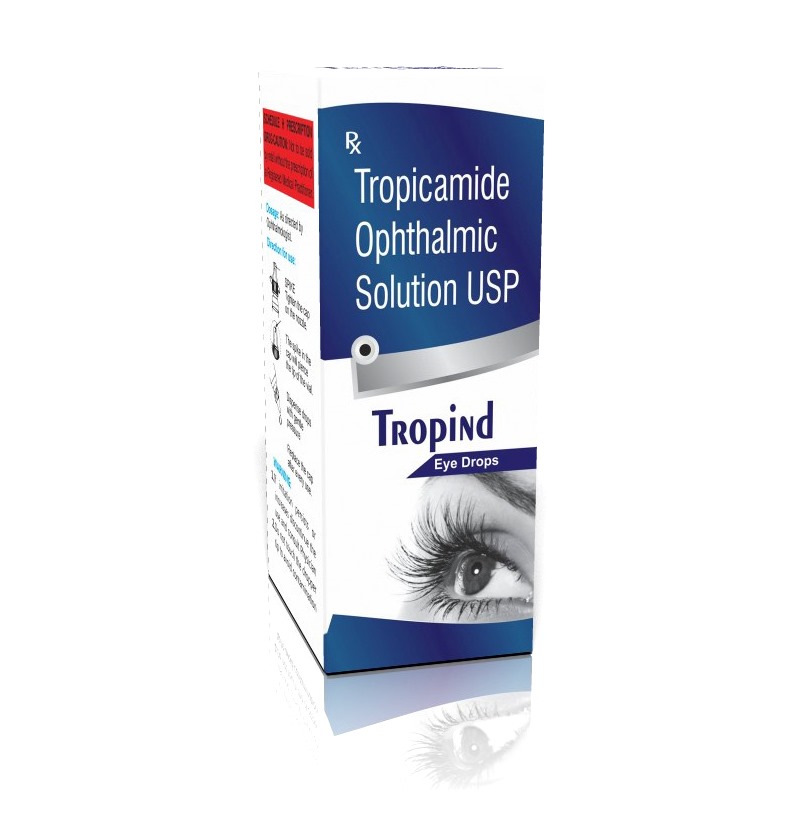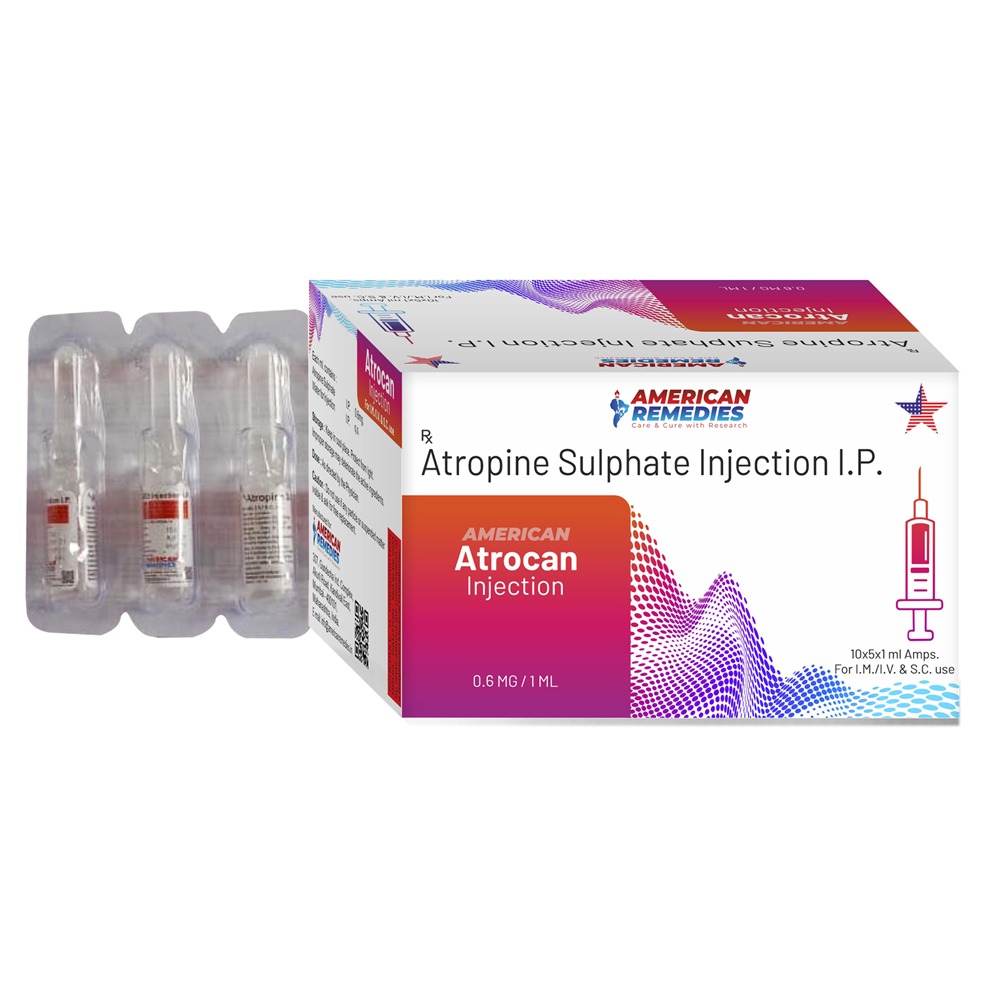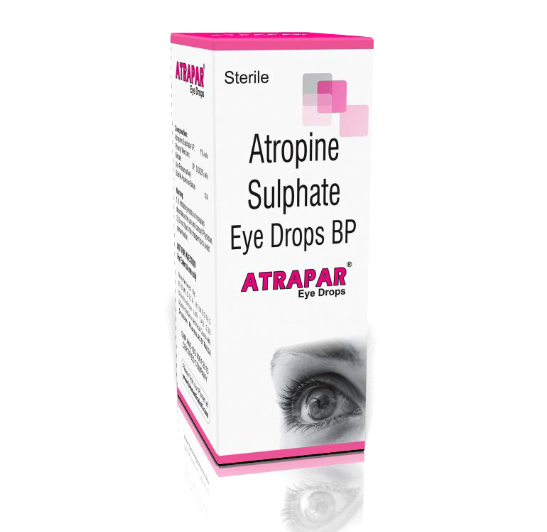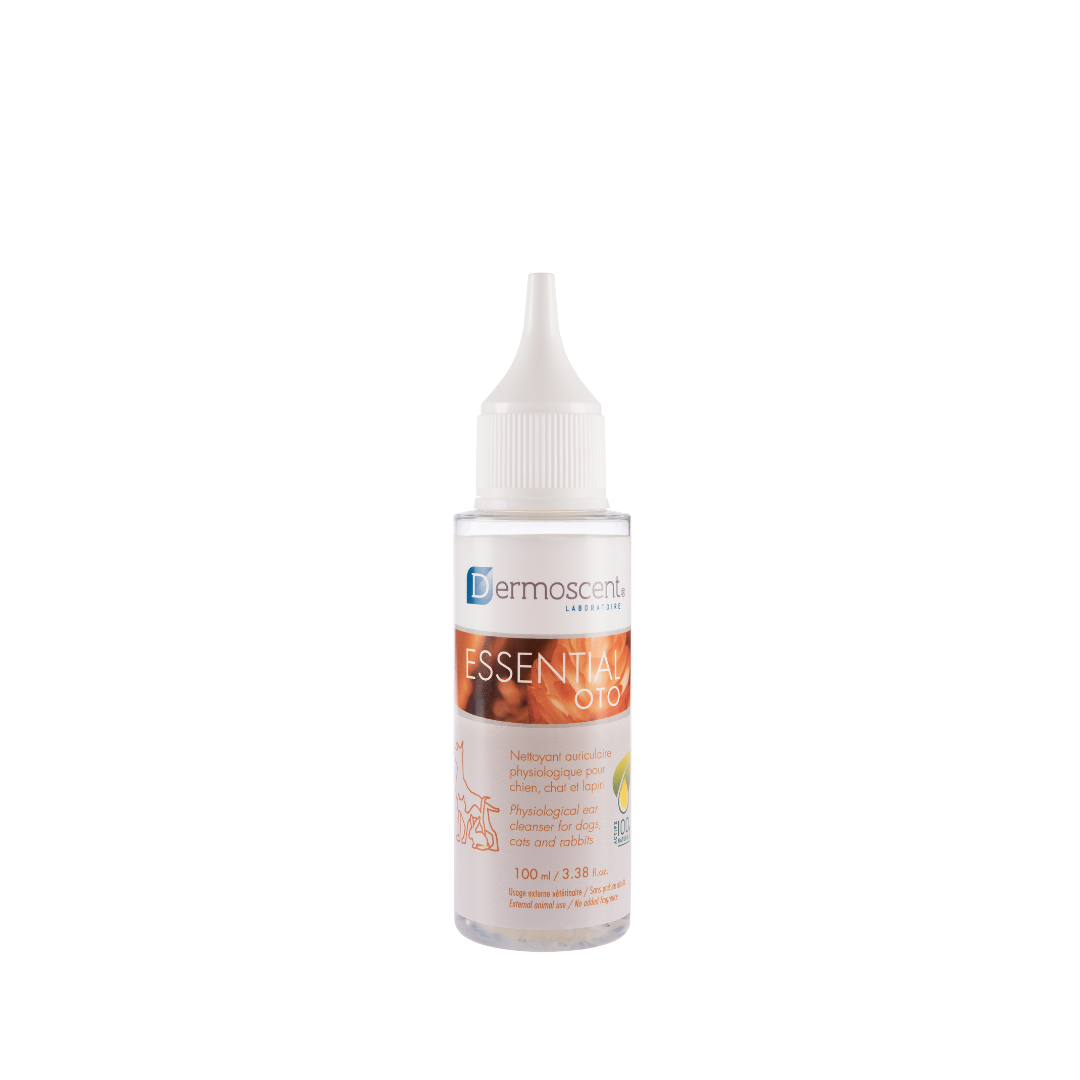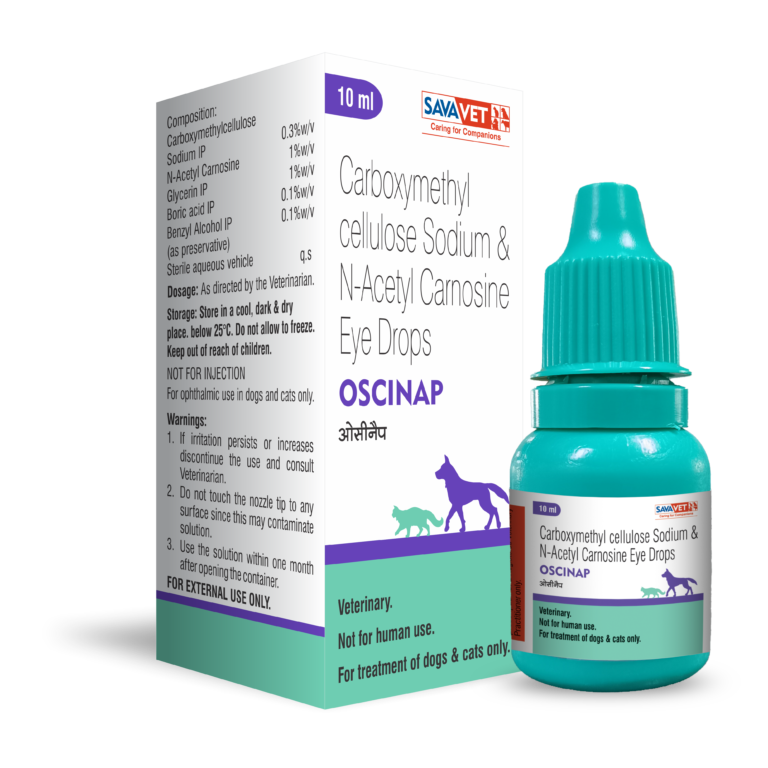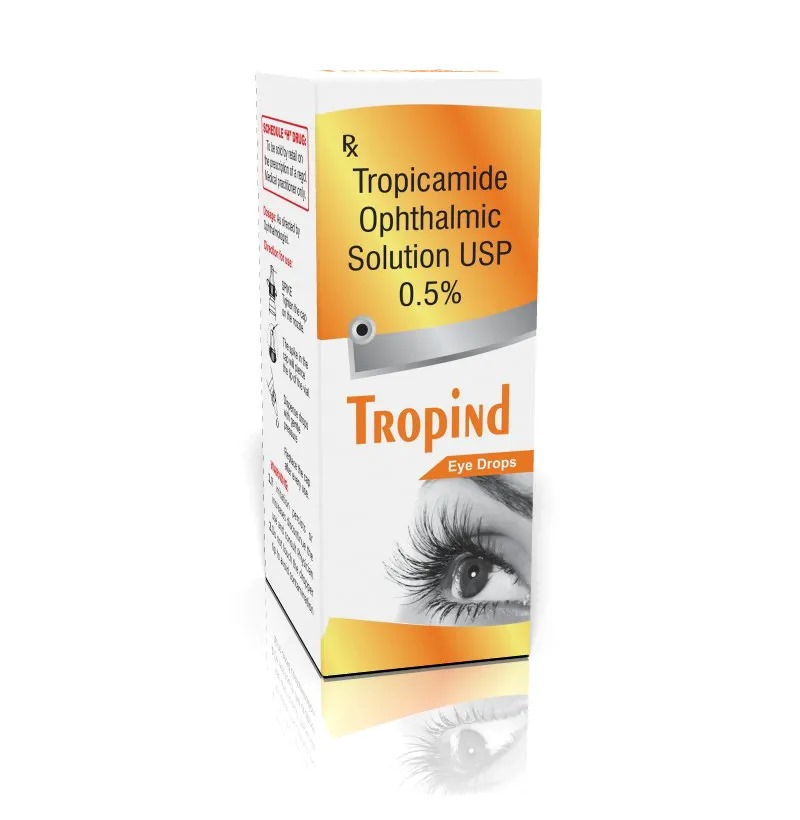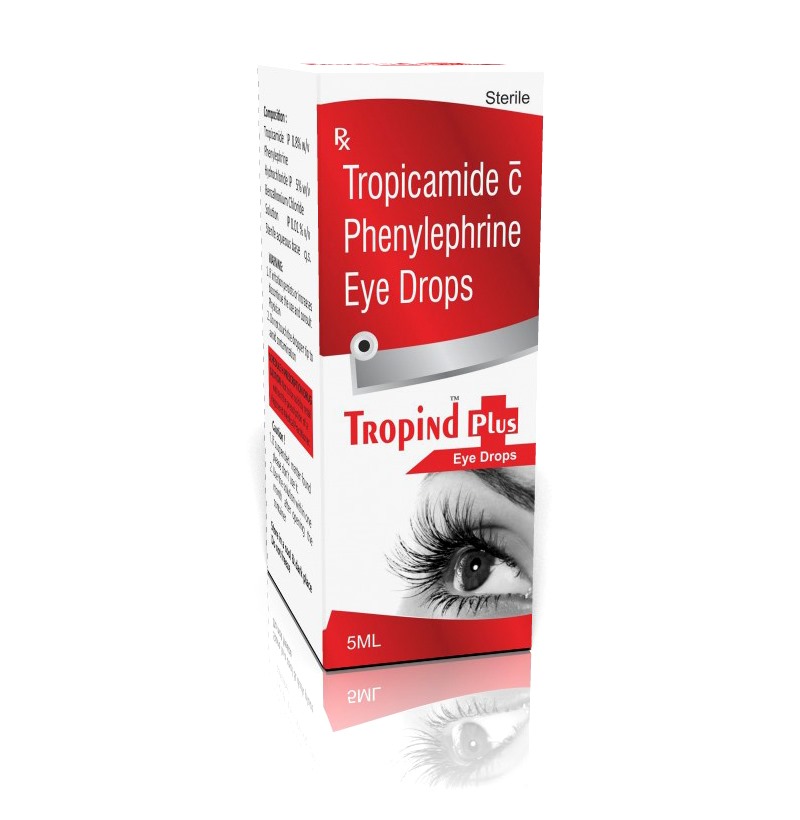Tropind (Tropicamide 1%) Ophthalmic Solution is commonly used for the following purposes: Pupillary Dilation (Mydriasis): Tropind is often used by eye care professionals to dilate the pupils during eye exams, such as fundoscopy or slit-lamp examinations. It helps them get a clear view of the retina, optic nerve, and other structures inside the eye. Cycloplegia: Tropind is used to temporarily paralyze the ciliary muscle in the eye, which controls the lens's focusing ability. This is useful during certain types of eye exams, such as refraction tests, to evaluate the eye's refractive error without interference from accommodation (focusing). Treatment of Certain Eye Conditions: It may also be used to treat or manage certain eye conditions, such as uveitis (inflammation of the middle layer of the eye), to relieve pain and prevent further spasms of the eye muscles. How it works: Tropind contains tropicamide, which is an anticholinergic agent that works by blocking the action of acetylcholine on the muscles of the iris (pupil) and the ciliary body, causing pupil dilation and paralysis of accommodation. Administration: It is usually instilled directly into the eye as drops. The effects typically last for a few hours, depending on the individual and the purpose of use. Side effects: Potential side effects may include temporary blurry vision, sensitivity to light (due to pupil dilation), or stinging when the drops are first applied. Always follow the instructions provided by your healthcare provider or the product label when using Tropind.
Send Message